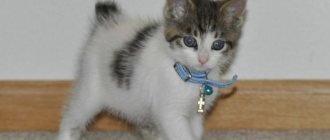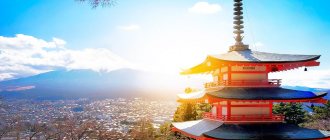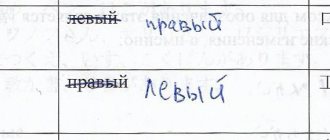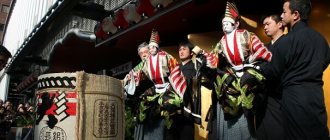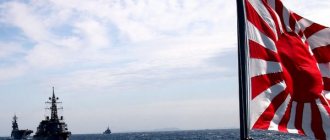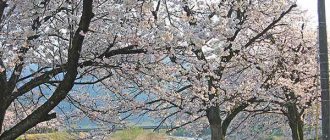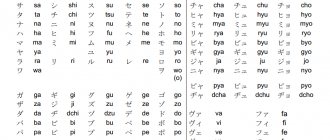An unusual, mysterious and unique country, Japan never ceases to amaze and interest its Western neighbors. Its culture is slowly penetrating the thoughts and habits of citizens of other states, even if for now it is limited to cooking, cars and cartoons. When trying to comprehend Japanese culture, the main thing is not to try to directly interpret any symbol: the Japanese meaning is sometimes directly opposite to what is put into the image by Europeans. It’s better to listen and read what the Japanese themselves think about this.
Symbolism in Japan
As a state completely isolated by water from other continents and highly dependent on the vagaries of the ocean and its gifts, the Land of the Rising Sun is very respectful of marine life. Almost every ocean resident is some kind of symbol for the inhabitants of the archipelago. The Japanese octopus, for example, represents love. And not brotherly or maternal, but the most carnal thing. By serving a Japanese a dish with octopus, you are openly inviting him into bed. Moreover, he has no right to refuse!
"Life"
The hieroglyph 生 is one of those characters that have simply a huge number of readings. Below we present only the obligatory ones, but there are also rare and unusual readings! Don’t worry, if anything happens, you can look into the dictionary, but the basic readings will be remembered very quickly - they occur quite often.
This "kanji" consists of only one element - 生 "to be born." The entire hieroglyph is key number 100 , which, as a constituent element, is included in other signs and by which they, like the hieroglyph 生 itself, can be found in the dictionary.
When writing "kanji", pay attention to the stroke order :
The hieroglyph reads as follows:
Ony:セイ – life, existence ショウ
Kuny:い(きる) – live, be alive い(かす) – revive; to keep alive; use optimally; restore (crossed out) い(ける) – do ikebana; keep alive; def. alive うま(れる) – to be born う(む) – to give birth, to bring お(う) – to grow; live は(える) – grow (about plants; also about hair, nails, teeth, wings) は(やす) – let go, wear (a beard, mustache) き – +の unprocessed; crude; unrefined sake なま – +の raw; unprocessed; not ready; inexperienced; +で cash
The ancient outline of the hieroglyph resembles grass growing from the ground . If you think about it, life is indeed associated with birth and growth, since these processes are characteristic of all living things. Of course, now the writing of the hieroglyph has changed a lot, but perhaps this interesting information will help you remember it.
Words in which the sign is used:
| Word | Reading | Translation |
| 生活 | せいかつ | life, existence; everyday life |
| 誕生 | たんじょう | birth |
| 長生き | ながいき | longevity; long life |
| 生水 | なまみず | raw water |
sacred carp
Almost every Japanese fish has its own special sacred meaning. The symbol that is more widely known and loved by the Japanese more than others is the carp. On the islands it is called "koi" and is considered the embodiment of strength and courage. This is explained by the persistence of carp going to spawn. Koi is able to jump out of the water higher than one and a half meters, swim against a strong current and always overcome it. In this regard, the Japanese carp acts as a patron of men. Koinobori - flags with the shape of a fish - are hung on Boys' Day on the house, sometimes according to the number of all the men living in it. Black is assigned to the father, red to the eldest son (sometimes to the mother), blue to each of the children.
The yellow carp is perceived as a completely different symbol: the Japanese koi in this case becomes the personification of love. However, not as aggressive and down-to-earth as an octopus. Rather, it symbolizes the strength of marriage bonds. It is not for nothing that newlyweds in Japan consider it obligatory to release a yellow koi into the pond: it seems to become a guarantor of family happiness.
Another “good” fish is considered to be perch, called “tai” in Japanese. There are as many as seven gods of luck in the pantheon of this country. One of them, Ebisu, is depicted with this fish in his hands. It is believed that tai brings good luck in righteous works and new, but only good, endeavors.
Japanese fish is a symbol of evil and death
The Land of the Rising Sun is distinguished by a certain harshness and even cruelty. These people, perhaps, have more punitive and threatening images than favorable and patronizing ones. And the Japanese symbol of death is, of course, represented by a shark. Moreover, in addition to the end of life, it can mean undisguised evil, bad intentions, and danger - ferocious and almost inevitable.
An explanation for the attributed qualities is not difficult to find. Initially, Japan is a country of fishermen and sailors. And in the ocean you cannot find a more formidable predator than a shark. Its inherent cunning and persistence make the fish an even more formidable opponent.
Japanese characters and their meaning
As you probably already know, Japanese writing is hieroglyphs. These are special characters that were borrowed from China. In Japan, hieroglyphs are called “Letters (of the Han Dynasty)”, or “Chinese characters” 漢字 (kanji). What is the history of Japanese characters? The system of Chinese characters is believed to have originated
as early as the 16th century BC. Japanese is the language until the 5th century AD. had no written form. This was due to strong state fragmentation. Japan was a weak state, consisting of many principalities, each of which had its own power, its own dialect. But gradually strong rulers came to power, the unification of principalities began in the country, which led to the adoption of the culture and writing of the most powerful state at that time. It is not known exactly how Chinese writing ended up in Japan, but there is a widespread version that the first hieroglyphs were brought to the country by Buddhist monks. Adaptation of Chinese writing was not easy, because... The Japanese language has nothing in common with Chinese in grammar, vocabulary, and phonetics. Initially, Japanese Kanji and Chinese Hanzi characters were no different from each other. But now there is a difference between them: some characters were created in Japan itself - “national characters” 国字 (kokuji), some received a different meaning. And after World War II, the writing of many kanji was simplified.
It would also be worth noting that in addition to hieroglyphs, the Japanese language also has two syllabary alphabet: hiragana and katakana. Nowadays, hiragana is used to record the sound of Japanese words or can write down some grammatical structure, and katakana is used to record borrowings.
Why do Japanese characters need multiple readings?
The Japanese borrowed from the Chinese language not only hieroglyphs, but also their readings. Having heard the original Chinese reading of a character, the Japanese tried to pronounce it in their own way. This is how the “Chinese” or “on” reading came about – 音読 (onyomi). So how to read Japanese characters? For example, the Chinese word for water (水) – “shui”, taking into account the peculiarities of Japanese pronunciation, turned into “sui”. So the Japanese character for “tree” (木) has the onyomi reading “moku” and the kunyomi (more on this below) “ki”, and the Japanese character for man (人) is read as “jin” for the onyomi and “hito” for the kunyomi. Most kanji have multiple onyomi because they were borrowed from China several times: in different periods and from different areas. But when the Japanese wanted to use characters to write their own words, Chinese readings were not enough. Therefore, there was a need to translate the hieroglyphs into Japanese. Just as the English word "water" is translated as "みず, mizu", the Chinese word "水" has been given the same meaning as "みず". This is how the “Japanese”, “kun” reading of the hieroglyph appeared - 訓読み, (kunyomi). Some kanji may have several kuns at once, or may not have them at all. The Japanese character for patience (忍), for example, has onyomi and kunyomi: "nin" and "shinobu". Quite often used Japanese characters can have ten different readings. It happens that the choice of reading a hieroglyph can depend on many things: the context, the intended meaning, combination with other kanji, and even on the place in the sentence. Since the choice of reading can be influenced by various factors, often the only sure way to determine where the reading is on and where the reading is kunnoe is to learn specific constructions.
How many hieroglyphs are there in total?
It is almost impossible to answer the question about the total number of hieroglyphs, since their number is truly enormous. In dictionaries: from 50 to 85 thousand. However, in the computer field, font systems have been released that contain encodings for 170-180 thousand characters! It includes all ancient and modern ideograms ever used throughout the world. In ordinary texts, such as newspapers or magazines, Japanese characters are used only in a small part - about 2500 characters. Of course, there are also rare hieroglyphs, mostly technical terms, rare first and last names. There is a so-called "kyōiku kanji". This is a list of hieroglyphs that children learn at the initial stages. In the first edition it contained 881 Japanese characters, currently it contains 1006 Japanese characters. There is also a list of “everyday characters” (“joyo-kanji”), which contains 2136 characters. This is the number of characters that are studied in Japanese schools; any graduate should remember and be able to write them. In everyday life, these hieroglyphs will be used constantly.
How to quickly memorize hieroglyphs?
There are several options for quickly memorizing Japanese characters:
However, it is worth remembering that there are a lot of hieroglyphs in the Japanese language and it will not be possible to learn them all at once and quickly. It is better to gradually learn Japanese characters and the meaning of Japanese characters with translation into Russian. To periodically recall those kanji that have already been passed, you can create cards or simply find Japanese characters in a photo, for example, by entering “Japanese characters png” into the search bar. It is also convenient to look for Japanese characters on a black background, so you can see all the parts more clearly.
Why don't the Japanese give up hieroglyphs?
Why is the "々" symbol needed?
The symbol "々" is not a hieroglyph.
As we already know, any ideographic sign has at least one specific phonetic correspondence. The same icon constantly changes its reading. This symbol is called a repetition sign, and it is needed in order to avoid re-writing hieroglyphs. For example, the word “people” consists of two characters for “person” - “人人” (hitobito), but for simplicity this word is written “人々”. Although Japanese does not have a grammatical plural form, it can sometimes be formed by repeating kanji, as in our human example: It also happens that some words change their meaning when doubled:
The symbol "々" has several names: the dancing sign 踊り字 (odoriji), the repetition sign 重ね字 (kasaneji), noma-ten ノマ点 (due to its similarity with the katakana characters ノ and マ), and many others.
What is the order of writing traits in hieroglyphs?
Many elements of Japanese writing have a specific sequence of strokes. Correct stroke order helps ensure that characters are recognizable even when you write them quickly. The Japanese reduced this order to several rules, which, of course, have exceptions. The most important rule: hieroglyphs are written from top to bottom and left to right
. Here are some more basic rules:
1. Horizontal lines are written from left to right and parallel;
2. Vertical lines are written from top to bottom;
3. If a hieroglyph has both vertical and horizontal lines, then the horizontal ones are written first;
4. The vertical line that intersects the hieroglyph or its element in the center is written last;
5. Horizontal lines passing through the sign are also written last;
6. First the slash to the left is written, then the slash to the right;
With the correct order of strokes, the hieroglyph turns out beautiful, and it is much easier to write. All kanji must be the same size. For a hieroglyph to be balanced, it must strictly fit into a square of a given size. Now that you know what order of strokes you need to follow, try writing a few simple hieroglyphs, which we have already encountered in this article:
人 - person
山 - mountain
水 - water
木-tree
火 - fire
Where to learn Japanese characters and their symbols?
If you start learning Japanese, you will inevitably have to learn hieroglyphs. The good news is that you don’t have to learn all the Japanese characters. Not a single Japanese person knows all Japanese characters. However, there are some Japanese characters and their meanings that you need to know, including some difficult Japanese characters.
You can study Japanese kanji characters with translation using textbooks, for example, “Basic kanji book” or “Ryugakusei no tame no kanji”. Japanese characters and pictures for them are given there. Easy Japanese characters come first, but they become more difficult from lesson to lesson. It is impossible to determine the simplest Japanese character, as well as the most complex Japanese character, so textbooks simply gradually increase the level of difficulty. These manuals also provide decoding of Japanese characters, Japanese words and their meanings.
Duality of the image
Despite all the fear with which the shark is perceived by the inhabitants of Japan, it is at the same time a sacred animal. If fishermen have to hunt a shark, it is preceded by special rituals, since the predator can simultaneously be a messenger of the deity. In this case, she will be called Same. Moreover, when treated with respect, the divine shark helps sailors: its power is enough to provide the ship with good weather and the crew with a rich catch. If you get a tattoo in the form of an inhabitant of the sea waters, then, according to popular belief, it will become a wonderful amulet and will protect you from a variety of troubles in life.
water bijuu
Japanese sacred beliefs suggest the existence of highly specialized tailed demons, each of which is responsible for a specific element. By the way, the Japanese have five of them: lightning is added to the usual European earth, water, fire and air (in the Japanese tradition - wind). The water demon bijuu is depicted as a horned shark. Although in some pictures there is a cross between a toad and a turtle, each having three fangs and a tail. Storms and tsunamis are the consequences of the rise of the demon shark from the depths. Bloodthirstiness, ruthlessness and aggressiveness are the features of the symbol of death and evil.
The minions of this demon can receive certain “carrots” from him, but they have to pay very dearly for them. This is the difference between the demon shark and the divine messenger Same.
Other sinister animals
Some researchers often argue which Japanese fish is a symbol of death. While the most terrifying ocean animal is undoubtedly the shark, Japan's horror stories include other images of evil. The most famous is the deep-sea catfish, called Namazu by Japanese fishermen. However, this is a slightly different symbol: the Japanese people rather attribute to it not personified forces of nature, the blind rage of the elements. Rather, we can say that Namazu personifies (and, according to some beliefs, foreshadows) terrible cataclysms that threaten troubles and deaths.
Eel also does not have a very good reputation. Despite the fact that it is a favorite ingredient in many national dishes, this underwater inhabitant is often a symbol of cunning and sudden death. They probably eat it to prevent the latter and destroy insidious plans.
On the southern islands of the Japanese archipelago, for some reason the harmless manta sometimes appears as a frightening image of death. Probably the reason for this is its peculiar appearance, for which the gentle animal received the nickname “sea devil” from European sailors and was surrounded by a huge number of scary stories.
"Victory"
The character 勝 can be divided into three elements : on the left is “meat” 月, on the right is 龹 at the top and “strength” 力 at the bottom. The component “strength” is the key of hieroglyph No. 19.
Him:ショウ
Kuns:か(つ) – to win, win, gain the upper hand まさ(る) – to surpass
This “kanji” is one of the so-called会意 “kayi” - hieroglyphs that are made up of several others. In this case, the sign 朕, which here means “to raise,” and the sign 力, “strength,” were used. It turns out that “victory” 勝 is “strength” 力 something “to keep at the top” 朕. Simply put, to win, you need to have good abilities that allow you to be above everyone else. This turns out to be a kind of mnemonic rule .
| Word | Reading | Translation |
| 勝敗 | しょうはい | victory or defeat; outcome (of battle, duel) |
| 優勝 | ゆうしょう | sport. victory |
| 名勝 | めいしょう | beautiful place |
| 勝手 | かって | kitchen; orders; status; own convenience; own pleasure; own discretion; self-will; arbitrariness |
Our hieroglyphic article has come to an end. We hope you found it useful. Do not forget to write down hieroglyphs when studying them, and also repeat them from time to time. Reading will help you memorize “kanji” by heart - the more often you encounter a hieroglyph, the “closer” it will become to you. So don't skip your reading sessions ! Good luck in learning Japanese!
Japanese characters: “life”, “death”, “freedom”, “victory” - we learn reading, writing and meanings together. Learning Japanese Kanji is easy!
